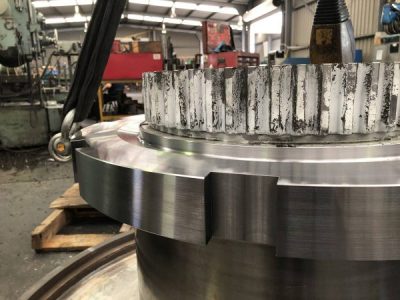Did you know a skirt was named after the Mini? Or that the Minivan helped to keep Chrysler from bankruptcy? At Prime Engineering, we’re fascinated by the history and stories behind all types of engineering, especially automotive. It’s amazing how the design of cars today owe much of their genetics to the cars that came before them. Keep reading to discover the top 10 cars that we think changed automotive history with their groundbreaking style and innovative design traits.
1. Ford Model T (1908)

The Model T is generally accepted as the first real automotive car that was affordable to the masses. It allowed the middle class to travel more easily and also put the farmer on wheels. Produced for a run of 19 years, more than 15 million Model T Fords were manufactured across the globe. For this reason alone, the Model T cements its place on this list of cars that make automotive history what it is today.
2. Austin Seven (1922)
This beauty was the most reliable, well designed and properly manufactured car from the 1920’s. The Austin Seven was the replacement to the Model T in many parts of the world. Being almost half the weight of the Model T meant that it could utilise a much smaller engine – a 747 cc inline four cylinder to be exact. This car appears on this list not because of what the car represented, but the impact it had on the world. BMW, Nissan, Lotus, Mclaren, Jaguar, Jeep and GM all copied the car which boosted their success.
3. Chrysler Airflow (1934)
Chrysler set out to reinvent the modern car in 1934 by designing a motor vehicle that was sleeker and incorporated a unibody chassis structure. They also had the wise idea of padding the interior pieces and shifting the weight distribution so the car was more balanced. At the time, the public despised the design and car, but in fairness, the car was the first of its kind to feature specifications that are now an inherent part of every car build.
4. Volkswagen Type 1 (1938)
VWs were actually design during Nazi Germany, so unsurprisingly, there weren’t that many VWs that were successfully manufactured and released until after WWII. Ferdinand Porsche designed this automobile to meet very specific requirements with regards to capacity, speed and economy. This car ran in production from 1938 until 2006, making it the longest production car and in the process, becoming a true cultural icon.
5. Chevrolet (1955)
Chevy had always trailed Ford in the design department, but in 1955, the tables began to turn. In the early 1950s, Chevrolet was slow to update their designs from the post-war era, but in 55’, they adopted the true ‘shoebox’ look. Smooth straight panels with wrap around the front and rear windscreens provided a never before seen style. This made the 55’ an instant classic, which is still highly sought after today.
6. BMC Mini (1956)
This is the car that started a worldwide trend. It stopped traffic when it was first manufactured, and even today continues to fascinate onlookers when they see an original BMC Mini in the flesh. The car was designed by Sir Alex Issigonis to meet various needs of the British public and to be very efficient. With an aim to fit four 183cm adults inside its 3m x 1.2m x 1.2m frame, he had his work cut out for him. He did this by mounting the engine transversely and pushing the wheels right to the exterior of the car to maximise space inside. Around the same time, a fashion designer coined the term ‘miniskirt’ due to how trendy the car was, which only further drove the desire to own one. They also have considerable racing heritage, both in rally and on the track!
7. Ford Mustang (1964/5)
The Mustang took off exponentially when it was launched. Ford’s Falcon base design with a 2+2 seating arrangement had never been seen before 1964, and the beauty of the design was that underneath the shell, it utilised many of the same parts already in other Ford cars. This meant that factory workers did not need to be retrained and dealers didn’t need to stock a huge deal of inventory. The release of the Mustang absolutely rocked the market, and other manufacturers scrambled to release their own version of the ‘Pony Car’.
8. Lamborghini Miura (1966)
Crowned the world’s first supercar, automotive historians say the Lamborghini Miura deserves this title not only because of its unparalleled performance capabilities, but also the boundaries that it pushed. People had no idea cars could turn, stop or accelerate like this, and it was easily the fastest car in production at the time of its birth. The design had much in common with racing cars of its time rather than passenger production vehicles. After its unveiling at the 1966 Geneva Motorshow, the rest was history.
9. Chrysler Minivan (1983)
At the time of the Minivan’s design, Chrysler was about to go out of business. They were broke, bankruptcy was looming and they had only one basic powertrain option to work with. Engineers at Chrysler forever changed the way motorcars were designed with this car. Even though the Minivan was boxy, it sported a sliding door and was able to easily fit in a standard car spot, making it perfect for growing families.
10.Toyota Prius (1997)

The Toyota Prius was the first hybrid car that was mass produced, and is probably still yet to be recognised as the founding father of the hybrid car movement. Just as the Model T changed the world by bringing cars to the masses, Toyota did the same with hybrid tech and the middle class. It started the revolution and race to build better, more luxurious hybrid or electric vehicles. To date, it remains one of the most environmentally friendly cars ever designed, which is how it earned its spot on this list.
Prime Engineering is constantly amazed by the advancements in the automotive industry, and we look forward to seeing what the future holds. We specialise in large parts machining and are located in Brisbane. Whatever your engineering project, our workshop can handle the job! Contact us on 07 3733 2691 or use our online contact form to talk to us about your project.



